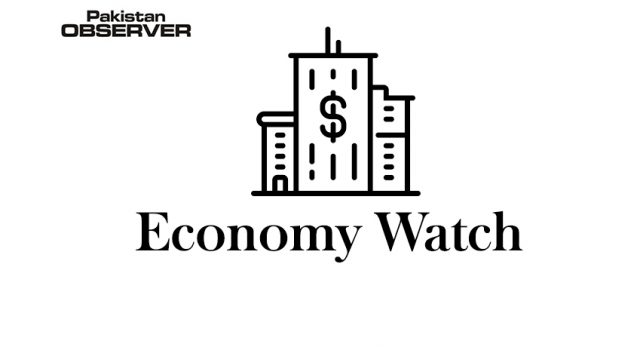Observer Report
Beijing
China’s tariff concession on Pakistani goods under 2nd phase of free trade agreement will be get implemented from January 1.
This was stated by Dr Wang Zhihua, the Minister Counsellor in the Economic and Commercial Office of the Chinese Embassy in Pakistan in an interview with China Economic Net. “China-Pakistan Free Trade Agreement (CPFTA) Phase-II is a critical initiative to strengthen trade liberalization and deepen the all-weather strategic partnership between Pakistan and China.
It will provide more opportunities for Pakistani competitive goods to access the Chinese market, the bilateral trade between two countries will be developed in a more balanced way.”
During the interview, Dr Wang Zhihua elaborated on the new stage of China-Pakistan bilateral trade relations. Below is a transcript of these interactions: To a question, Dr Wang Zhihua said CPFTA is the first FTA China signed with a South Asian country. Since its implementation in 2007, the bilateral trade volume soared from USD4 billion to USD15.6 billion, and the export volume from Pakistan to China rose from USD575 million to USD1.85 billion in FY2019.
In 2011, China and Pakistan launched the second phase of negotiations on the FTA. After a total of eleven meetings, the Protocol of the CPFTA Phase-II was formally signed at the Second “Belt and Road” Forum for International Cooperation held in Beijing in April this year.
Upon the approval of the legal procedures of both parties, CPFTA Phase-II has come into force on December 1, 2019 and the tariff concession measures will be implemented from Jan 1, 2020.
CPFTA Phase-II is a significant measure to implement the consensus reached by both countries’ leaders. It fully reflects China’s determination to uphold the multilateral trading system given the increase in the unilateralism and trade protectionist rhetoric on the world economy.
Moreover, he added, it will deepen the all-weather strategic partnership between the two sides. He said, the revised CPFTA marks a milestone for the economic and trade relationship of the two countries. More competitive products will be exported to each other due to the reduced tariffs. Take Pakistan for instance, it could export more competitive goods such as agricultural and textile products to China and increase its trade volume.
Furthermore, the Phase-II of CPFTA will enable China to import more high value added goods from Pakistan, which will drive Pakistani export-oriented industry and enable Pakistan to better integrate into regional industry chain and value chain, he added.
When asked about the main difference between the CPFTA Phase-II and the previous one, Dr Wang Zhihua, compared with the previous one, the revised CPFTA mainly reduces the tariffs and increases the level of trade liberalization of goods between the two countries.
After the implementation of CPFTA Phase-II, the proportion of the tax items of mutual zero tariff products between China and Pakistan will gradually increase from the previous 35% to 75%, and the level of liberalization will increase more than double.
Both sides will cancel the tariffs for 10% tariff lines next year, 15% in five years, and the rest 15% in ten years. In addition, the two parties will also implement a 20% tax reduction onto other products that account for 5% of their own respective tariff lines.
In order to accommodate Pakistan’s concerns, China makes special arrangements in the revised FTA, under which 90% of China’s imports from Pakistan will enjoy duty-free treatment, while Pakistan is to realize zero tariff on 67% of its trade volume. This fully reflects the special friendly relationship between the two sides.
In the Protocol of the revised FTA, customs cooperation is added besides the upgrading and amending of the market access, the table of tariff concessions for goods trade, rules of origin, trade remedy, investment, etc. in the previous FTA. Concrete measures will be implemented to further reinforce the customs cooperation such as the customs electronic data exchange.
About major products to be eligible for tariff concessions after the CPFTA Phase-II, he said on the basis of mutual benefit and win-win situation, China and Pakistan will include 80% of their tariff lines into tariff reduction.
China will adopt policies to grant zero-tariff treatment to 313 advantageous products which Pakistan concerns most, including cotton yarn, textiles, nuts and household accessories. In addition, China will also include the advantageous exports of Pakistan such as leather, clothing, shoes, hats, aquatic products and so on. Pakistan will incorporate machinery and electrical equipment, furniture, textiles, phosphate fertilizer, glass products, automobile and motorcycle parts, etc. into tariff reductions.
Answering a question about the Pakistani business community’s concerns about trade deficit with China, Dr Wang Zhihua said, China and Pakistan are All-Weather Strategic Cooperative Partners, the economic and trade cooperation between the two sides is a win-win situation. China has no intention to pursue trade surplus with Pakistan.
The Pakistan’s trade deficit with China is mainly caused by structural factors such as the differences in economic development stage and industrial structure between the two sides.
The Chinese government has been actively working withPakistani government to reduce the trade deficit. Many effective measures have been implemented such asmaking full use of various platforms to organize trade promotion activities and enhance the Pakistani export to China; inspection and quarantine cooperation on agricultural products have been carried out to promote the Pakistani cherry, onion, potato, beef and mutton to access the Chinese market; facilitation has been offered for Pakistani enterprises to participate in the key exhibitions such as China International Import Expo (CIIE) , Canton Fair and others to better explore Chinese market.
Working jointly with above measures, the implementation of CPFTA Phase-II will undisputedly help to reduce Pakistan’s export deficit with China and realize a balanced growth of two-way trade.
Dr Wang Zhihua further said, the CPEC is a major and demonstration project of the “Belt and Road” Initiative. Since its inception in 2013, especially after Chinese president Xi Jinping’s visit to Pakistan in 2015, CPEC has made positive progress and achieved remarkable results, contributing greatly to Pakistan’s social and economic development.










